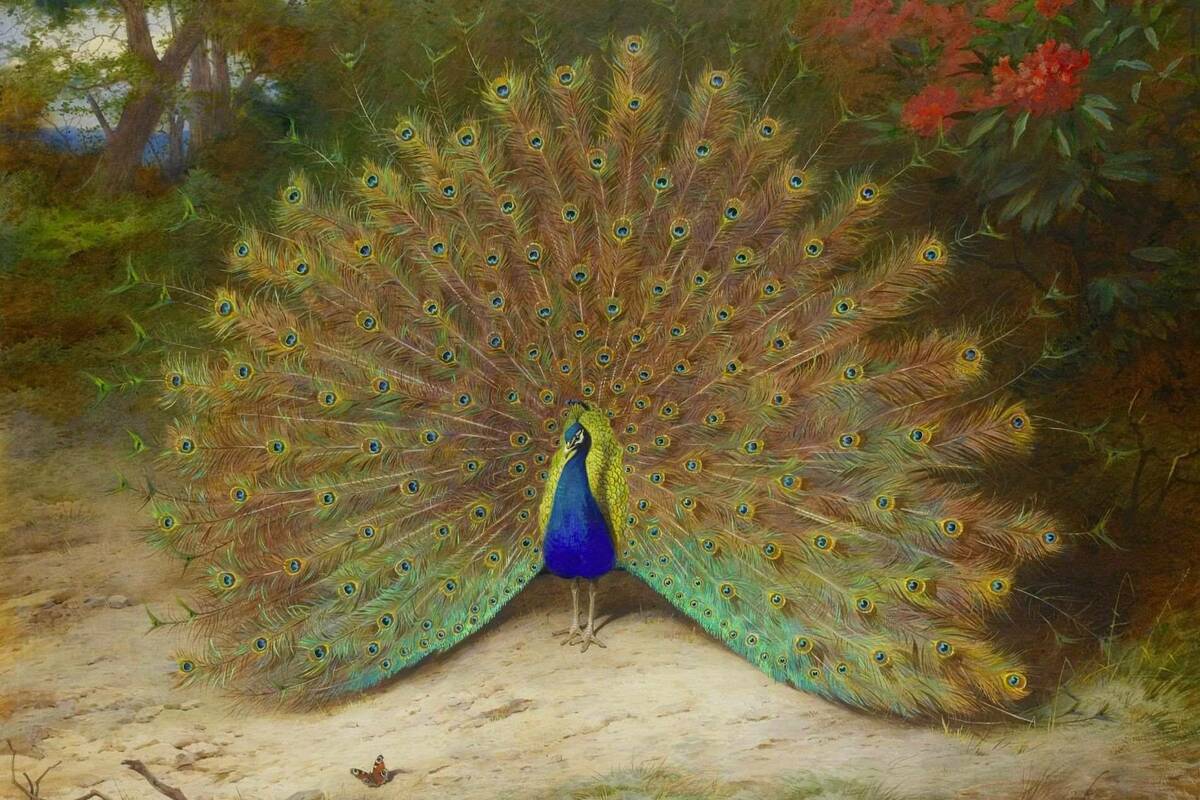There’s only so much someone can do when they’ve been dead for decades, right?[1]
Human beings have never been good with limits. Eat of every tree . . . except that one. Then, we were barred from Eden lest we try to eat of the Tree of Life. It is the great temptation after knowing good and evil—how can we live forever? Tupac Shakur died in 1996 (I remember running the story when I edited my high school newspaper), but in 2012 he rapped on stage alongside Snoop Dogg and Dr. Dre. It was a hologram image. In 2024 Dre resurrected his friend again in a song, “Taylor Made Freestyle,” which is currently causing a battle in congress over the ethics of AI-generated art from a dead person. And who can forget Carrie Fisher (who died in 2016) when she appeared posthumously in The Rise of Skywalker? Has AI granted us the ability to continue making art after we are dead? Is it granting us access to the Tree of Life? Every Christian should have just shuddered. Of course, AI is not the path to eternal life, but it raises questions about posthumous artistic creation.
This year I released a version of Flannery O’Connor’s unfinished third novel, Why Do the Heathen Rage? While the reception of the book has been good, so many people hoped for the finished novel. Years ago when I first tackled O’Connor’s unfinished material, I played with the left-behind fragments and wrote my own adaptation of O’Connor’s story. But by such a presumptuous ghostwriting of the unfinished novel, I created a Frankenstein monster that half limped like Flannery and half like me. I enjoyed writing fan fiction, but I could neither publish the book under her name nor mine. It was not the work of either one of us. Instead, I published my own adaptation of the material—a literary excavation where people can see behind-the-scenes into O’Connor’s world at the time of her composing the novel and what she was up to. I decided it was more important to be faithful to what O’Connor had left us than try to strike it with lightning and have it walk around in my own image.
If anyone saw Andrew Davies’ Sanditon, the BBC series based on Jane Austen’s unfinished novel by the same name, you have a feel for what I attempted when I first tried to complete O’Connor’s unfinished work. Davies began with Austen’s 24,000 words, which gave him one episode in an eight-part series. The rest is all Davies: hence the sex scenes, incest, and other contemporary insertions. Davies admits, “I aim to please myself when writing these things. . . . I write something that I would like to watch and I suppose the sexing it up thing comes in fairly naturally.”[2] (Others might argue with his adverb “naturally” and say that his desire to “sex it up” is rather postlapsarian.) The most disturbing admission is not about Davies’ penchant for sex, but that he focuses on what pleases himself rather than what is true to the author that he adapts.
A contrasting example—where adaptation has worked well—is when Dorothy L. Sayers translated the Gospels into a radio play, The Man Born to Be King. If we look at her struggles with the Biblical material, how Sayers sought to align herself with the authors’ intention, how she examined repeated words and their uses in differing moments in the text, and so on, we see an artist whose motivation is faithfulness to the art, as well as to the artist, and to the recipient of the work. Sayers was not trying to please her listeners; she was quite ready to scandalize them. “It was assumed by many pious persons,” Sayers wrote, “that my object in writing The Man Born to Be King was ‘to do good.’ . . . But that was not my object at all. . . . My object was to tell that story to the best of my ability within the medium at my disposal—in short, to make as good a work of art as I could.”[3] Sayers’ motivation was to “serve the work,” as she often put it.
In these examples, what we have at play is a human variable that AI cannot account for—motivation. Art is produced by a series of choices, as well as via mystery, grace, and revelation. If AI completes the work that an artist began, there is no motivation within the process, no moral choices between sexing it up or remaining faithful. Why not complete it one way versus another? Or complete one scene in this direction and choose these words as a way of being subversive? Leaving aside the question of whether AI can match the literary quality of the human writer, the computer (at least right now) seems unable to answer imaginatively, “What next?”
In “I want AI to tell me how the story ends,” novelist Nathan Dunne disagrees. Giddy with anticipation for the advancement of AI, Dunne hopes we may now “discover what happens to Jane Austen’s Charlotte Heywood in ‘Sanditon’ or how Cecilia Brady copes with her grief in F. Scott Fitzgerald’s ‘The Last Tycoon.’” His list of unfinished literature looks backwards farther, even back to Euripides’s Iphigenia in Aulis. For Dunne, authors have been finishing one another’s work for eons, synthesizing and stealing from one another across the centuries and countries. “The most seductive thing about an unfinished work is the transfer of power from the author to reader,” Dunne argues. The ability to speculate on the “what next?” question is a special pleasure provided by the unfinished text.
If AI can finish what an author started, the power has been surrendered to neither artist nor reader but to unbiased, disinterested, soulless third party. The future of art: The Tree of . . . Life? It does not sound like a happy ending.
Months after my book was published, I asked ChatGPT to finish Flannery O’Connor’s third novel (or rather, since I am more of a Luddite, I asked my husband to show me how). I appreciated that the computer answered my query with an apologetic proem, “one must tread with respect for [O’Connor’s] voice and themes.” The themes that the bot mentions are explicit in the AI-produced text: “good and evil, righteous and damned.” Walter Tilman and his father are the primary characters, but AI has composed a new character out of thin air named Dr. Foley, a psychiatrist more in keeping with the characters in a Walker Percy novel. In the example produced by ChatGPT, I see right away the disparity between the writing of a believer and a computer that lacks the ability for faith.
“It makes a great difference to the look of a novel whether its author believes that the world came late into being and continues to come by a creative act of God, or whether he believes that the world and ourselves are the product of a cosmic accident,” O’Connor writes. “It makes a great difference to his novel whether he believes that we are created in God’s image, or whether he believes we create God in our own.” For the woman novelist who insisted that belief affected one’s writing, what would she have thought of the writing of an unbelieving machine? It may be too dark to imagine the Man with Red Eyes from A Wrinkle in Time or the floating head of the criminal in That Hideous Strength.
Perhaps a more apt allusion would be Adolph Knipe, who invents “The Great Automatic Grammatizator” in Roald Dahl’s 1954 story titled after the invention. Like a calculator, Knipe’s innovative device can produce novels for the user by just plugging in words such as “Satirical,” “racial problem,” “Classical” and characters, length, etc. After lots of tweaking, the machine can generate novels better than the authors, and of course, more efficiently. Motivation, imagination, and faith are not even variables considered in the advancement of writing progress. When content is king, the process no longer matters. The people behind the writing will be reduced to holograms and mechanized voices.
In a less efficient manner but with immense care and dedication, I spent almost fourteen years piecing together O’Connor’s unfinished fragments. I travelled in person to O’Connor’s archives, visited her former homes, read all her biographies, read dozens of books of literary criticism, re-read her own works probably a hundred times, transcribed all her pages, and tried several drafts of completing material. Every time I finished a version, I would send it to three or four other human beings who would read it and offer feedback. Through conversations with other people, then I would make changes and alterations. In the version of Why Do the Heathen Rage? that I published, many other people were involved in making the book. It took a community. It required a process. It was difficult, frustrating, rewarding, and beautiful. For the love of O’Connor, we made her book available to readers.
In comparison to AI’s lackluster completion, I am proud of what I put together on behalf of O’Connor. I have no final opinions on AI, and I am certain there are a thousand ways that I am wrong in what is possible with this new technology. But, after reading the finished pages that ChatGPT produced in response to my prompt to complete O’Connor’s novel, I am satisfied that we are a long way from replacing novelists or resurrecting their ghosts. Thankfully, unlike most human beings, AI seems better able at keeping within its limits.
[1] Greg Rosalsky, “It was a classic rap beef,” NPR’s Planet Money, May 14, 2024. https://www.npr.org/sections/money/2024/05/14/1250578295/it-was-a-classic-rap-beef-then-drake-revived-tupac-with-ai-and-congress-got-invo
[2] https://www.theguardian.com/tv-and-radio/2019/jul/27/jane-austen-sanditon-sexed-up-andrew-davies-adaptation#:~:text=%E2%80%9CI%20aim%20to%20please%20myself,thing%20comes%20in%20fairly%20naturally.%E2%80%9D&text=%E2%80%9CIf%20it's%20not%20there%20I,shame%20%E2%80%93%20let's%20put%20some%20in.
[3] Sayers, The Man Born to Be King (London 1943), 20.


